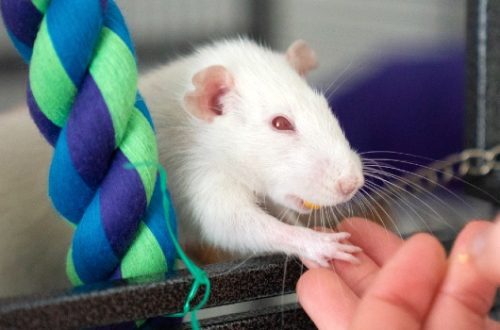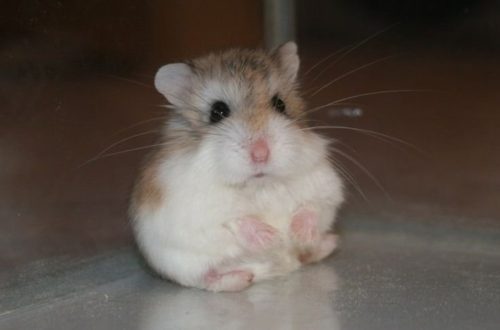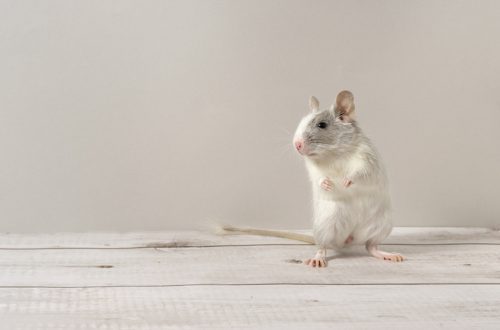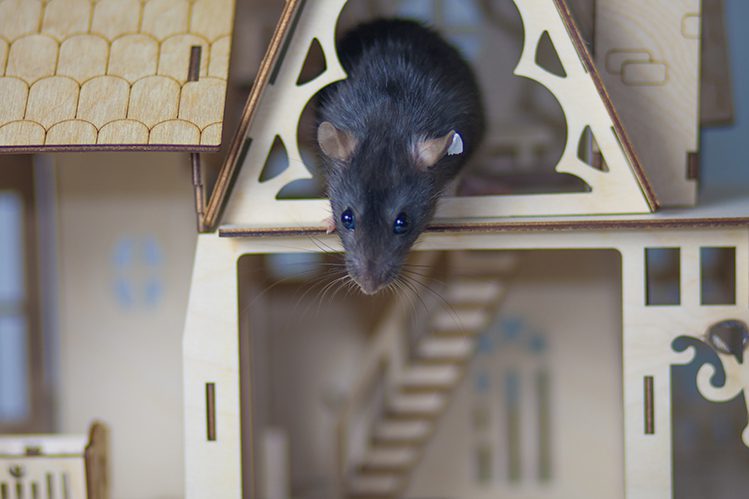
Six rules for caring for a decorative rat
To get a decorative rat means to find a cheerful, sociable friend. Keeping a pet requires discipline, attention to detail, and genuine concern for your pet. We have combined the basic rules for caring for a decorative rat into a six-point checklist.
What size cage for rats can be called suitable? If you have one pet, then a cage 50 centimeters high will be enough, the length and width of the cage will be 60 centimeters each. Choose a frame made of strong metal rods and a plastic pallet. Such a cage will last a long time, and it will be easy to clean it. Please note that the distance between the bars of the cage should be no more than one and a half centimeters.
It is highly desirable that inside the cage there are two or three floors, levels. At the disposal of the animal should be various stairs, labyrinths, you can put a running wheel.
Be sure to equip the rat cage with places to sleep and rest. Houses and covered hammocks, which can be purchased at a pet store, are best suited. This kind of hiding place satisfies the instinctive needs of rats to hide from potential enemies.

No matter how modern a sports complex you provide a cage for a rat, sometimes a pet needs to stretch its paws and take a walk around the room. Let the animal out of the cage only under supervision, leave the room only after the end of the promenade.
Keep away any small items that a rat might inadvertently swallow. Hide everything your pet wants to chew on. It is especially important to hide electrical wires in boxes or behind furniture.
Indoor plants and flowers are a separate issue that should be given attention. Some of them can be dangerous for a rat: for example, violet, geranium, dieffenbachia, cacti, as well as daffodils, lilies of the valley, peonies. Check out the full list of potentially dangerous plants on thematic sites. If your animal tastes such a “treat”, it can lead to indigestion in a mild case, and in the worst case, to a serious burn of the mouth or life-threatening poisoning.
What other safety rules should the owner of decorative rats remember? The cage must be located away from any machinery and equipment, away from radiators and direct sunlight, away from air conditioners, fans and drafts. The most suitable air temperature for rats is from 18 to 21 degrees.
Rat cage cleaning is best done once a week. Consider your choice of filler carefully. It should neutralize unpleasant odors and absorb moisture. Choose wood filler from deciduous trees, fillers from coniferous trees are dangerous for rats!
You can use sawdust, pressed wood filler – granules or pellets, as well as wood chips. Pellets are not very convenient for decorative rats, animals can damage the skin of their feet on them. The cellulose filler poured over the pellets will save the situation. Dusty, small chips and hay are not suitable at all as a filler – they can cause injury to the eyes of rodents.
The stop list of fillers includes cotton wool, rags, newspapers and colored napkins. It is ideal to use cleaned corn filler or special sawdust as bedding. The main thing is to change them more often.
Veterinarians and rodent owners have noted the benefits of corn litter. When sewage is absorbed, the corn filler turns into lumps that are easy to clean. Corn litter won’t do any harm if the rats decide to nibble on it.
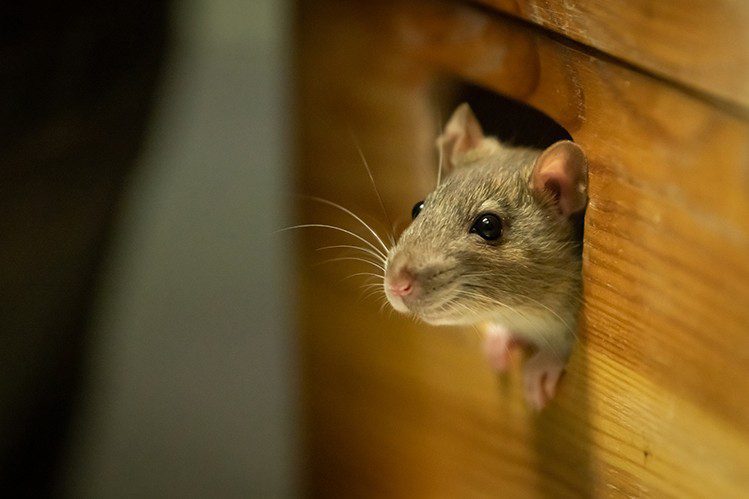
In keeping decorative rats, care and nutrition are the most important issues. The diet of ornamental rats must certainly include cereals, juicy green food and animal protein.
The basis of rodent nutrition should be specialized grain feed. It usually contains oats, barley, wheat and other cereals, as well as dried fruits and herbs. One adult needs to eat a tablespoon of food per day.
It is important to supplement the diet of ornamental rats with vegetables and fruits, except for citrus fruits. Give the ward small portions of chopped cucumbers, carrots, apples. A good addition would be fresh herbs – clover, plantain, dandelion, calendula. A couple of times a week, rats can be given boiled egg white, lean boiled fish, boiled lean chicken, beef or pork without salt and seasonings. Everything sweet, fried, smoked, canned by a small ward should not be eaten.
Place two bowls in the cage – for dry and fresh food. It is better to choose metal or ceramic bowls. They are heavy enough that rats will not turn them upside down during active games. Install a special automatic drinker for rats and change the water in it daily.
A rat’s teeth grow throughout its life. Make sure she has something to grind them on. The problem will be solved by a mineral or salt stone in a cage.
Caring for a decorative rat involves communication, games, and even training. Rats are very social creatures. If you’re at work all day, it’s best to have two rats at once. Ideally, these should be two brothers or two sisters. Such pets will definitely get along with each other and will not bring surprises like a whole brood of rats.
Rats need attention and communication with the owner. Hold the rat in your arms while you watch the movie. Stroke the rat’s ears and tummy between household chores. Remind your pet how much you love him.
Better yet, learn a few tricks with the rat. Training decorative rats will give you positive emotions and help you and your ward make friends sooner. There are many information resources dedicated to rat training. Among the basic tricks that you can teach the animal are jumping through a hoop, standing on its hind legs, and overcoming obstacles.
Learning tricks should be a joy for both you and the rat, the pet should not perceive training as something unpleasant and difficult. Don’t forget a treat for your gifted student! And often repeat the commands you have already learned.
Before starting training, let the new friend get used to you and the house, the pet needs time to adapt to the situation. During training, move from simple to complex. Notice the features of the character and behavior of the rat, learn those commands to which the pet has a penchant, there is no need to demand the impossible from the animal.
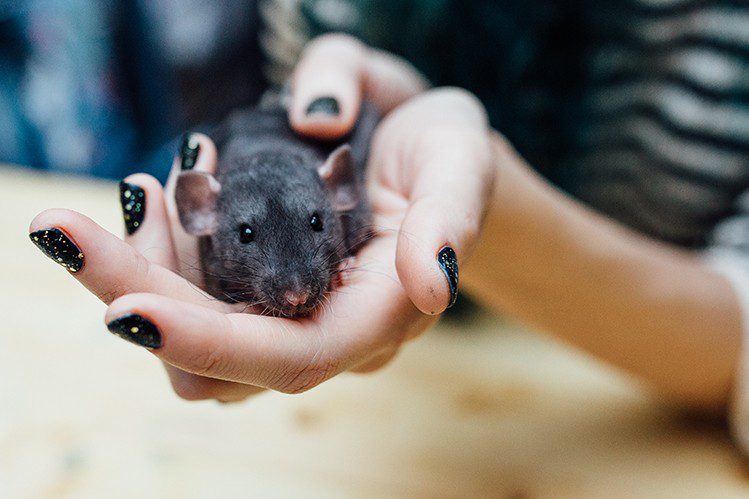
Regularly inspect your pet, keep your finger on the pulse of his well-being. Do not take a too young rat into the house; for the first five weeks, he should be near his mother. Buy a decorative rat from an experienced breeder or nursery, immediately evaluate the behavior and condition of the mucous crumbs.
A healthy pet is inquisitive, calm, smart. He gets along well with relatives, shows interest in people, is not aggressive. Smooth coat, lack of discharge and inflammation on the nose and eyes are signs of good health.
Watch for changes in appearance and habits of the rat. A signal of malaise may be sticky hair, combed skin. Since something is bothering your ward, you need to show it to the doctor as soon as possible. If a strong bad smell comes from a decorative rat, there are three options. Either it’s time for you to clean the cage, or you need to reconsider the choice of material, or your rat is not healthy, it’s time to take him to the veterinarian.
We are sure that you will be a sensitive and caring owner for your decorative rats. We wish your pets health and playful mood!



